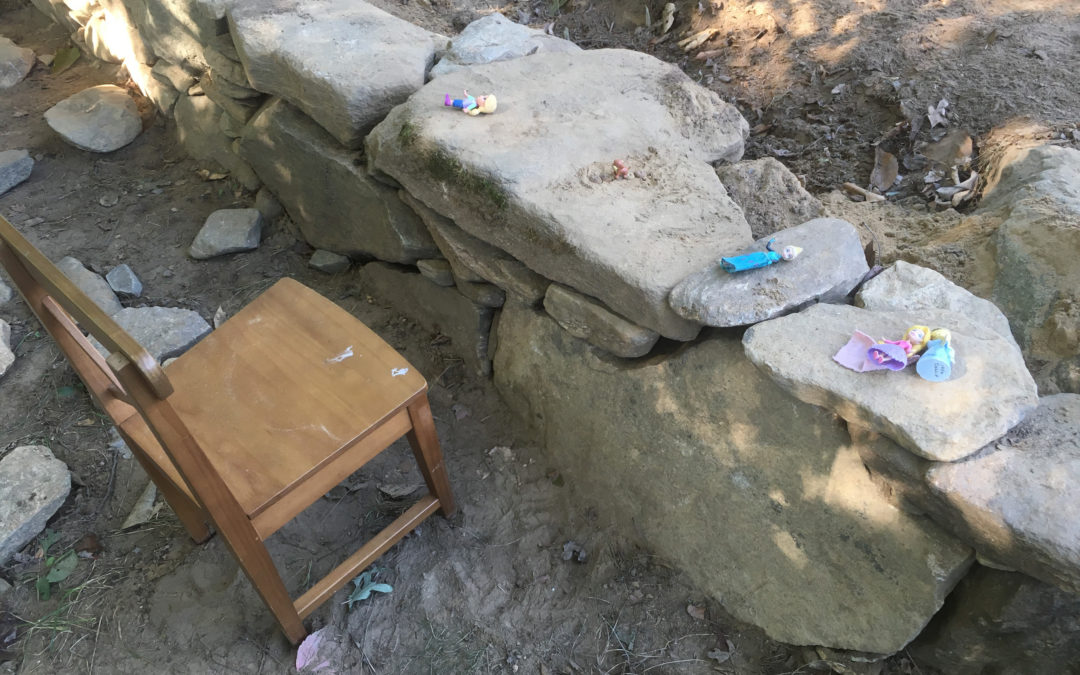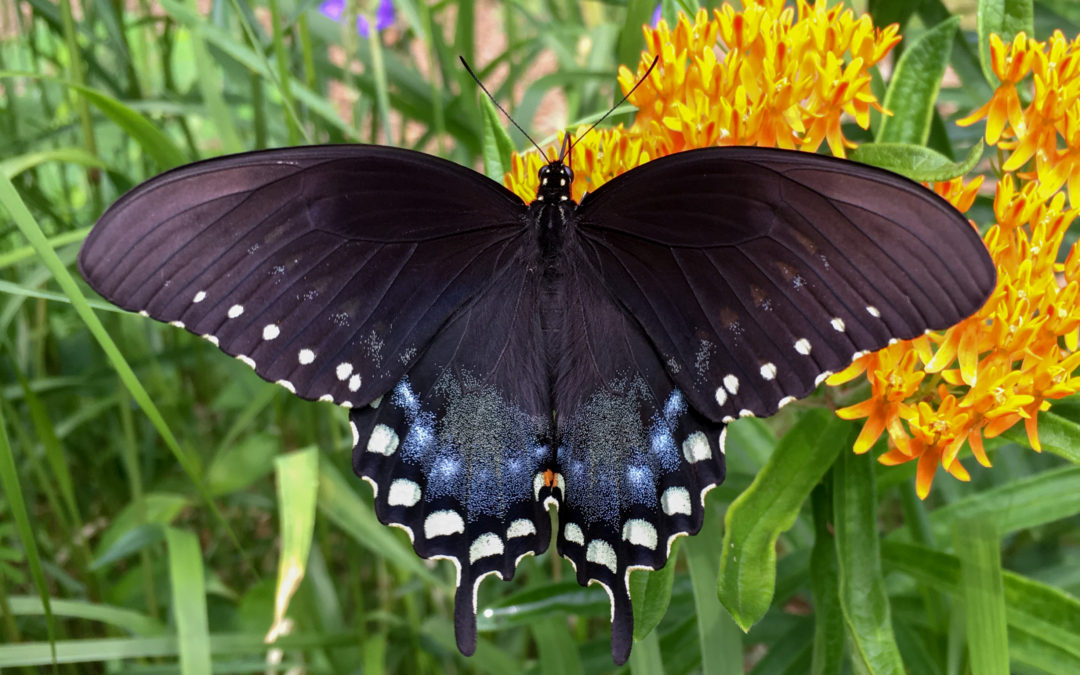by Amy Nyman | Feb 28, 2017 | Ecological Gardens, Miscellaneous, Seasonal Interest
 We’ve had a few days of such lovely warmth that we might forget it’s still winter. There is plenty of planning to do before vegetable gardens can be planted, so here is a Planting Calendar to help you organize for plan what can be planted first.
We’ve had a few days of such lovely warmth that we might forget it’s still winter. There is plenty of planning to do before vegetable gardens can be planted, so here is a Planting Calendar to help you organize for plan what can be planted first.
Get those seeds out and find a warm, sunny spot for germination (or grow lights if you have them) and start dreaming of your summer harvests and next winter’s treats!

by Amy Nyman | Feb 25, 2017 | Landscape Design Ideas, Miscellaneous, Plants, Seasonal Interest, Wildlife Habitat

Mosaic Detail in Granite Patio
Sometimes, a work space turns into someone else’s play space. This wall is the foundation for a sugar shack, but on this particular summer afternoon, it was the princesses’ castle wall. Planning for family activities is an important part of landscape design. Sometimes people focus solely on creating specific play areas for the kids, but often, just having an interesting space is what kids need.
Paths can twist and turn, as an invitation to see what is around the corner or the future site of a surprise attack. Elevation changes offer children a chance to experience viewing the world from a different perspective. Water features are possibly a place to splash, feel the coolness, see reflections, and watch insect, amphibians, and fish throughout their life cycles. Stones of different sizes, colors, and textures can inspire thoughtful inquiry or construction.
Diverse plant choices provide a variety of heights, textures, colors, smells, and tastes. Different plant heights allow kids to feel both big and small. Big plants provide hiding places where kids can see, but not be seen. Rhododendrons and lilacs become forts on the inside, fallen tree trunks become bridges or lookouts, vines create tents. Groundcovers are a carpet from which to watch the leaves flutter or clouds race across the sky. Small plants could become troll and fairy houses, or just the place where chipmunks disappear and reappear.

Swamp milkweed with crab spider
A variety of colors can help encourage exploration and discovery. Have you even taken the time to notice what color of plants attract what type of pollinators? Blooms, fruits, and leaf colors herald the change of seasons. Different textures of plants allow kids to experience plants by sight and touch. Small, large, broad and strappy leaves can be as inspiring as the soft, velvety feel of Canadian ginger and lamb’s ear. The leathery leaves of mayapples and their flowers that can only be viewed by peeking under the umbrella-like leaves (and finding out the fruits are food for Eastern box turtles). There’s the prickly and sharp, dried purple coneflower seedhead or the smooth, silky-soft feeling of northern sea oats or the leaves of threadleaf bluestar. The rough leaves of peppermint and sage, the smooth, brittle crush of skunk cabbage, and sweet woodland phlox provide exploration through scent.

Lowbush blueberry blooms
Edible plants like blueberries, wild strawberries, thimbleberries, and beach plums, elicit sweet memories of summer; the tartnesss of cranberries, the sweet vanilla-banana flavor of paw paw and savory flavors of herbs can surprise. Children can learn how fruits, seeds, and herbs are grown and how they can be added to meals for nutrition and increased flavor. There are also teachable moments about how all plant fruits are not edible, and children can learn to appreciate the knowledge that these fruits provide food for other creatures, even if not for humans.
There are so many different ways that landscapes and plant choices provide playful, sensory, and educational opportunities for children. Unstructered play and exploration of nature through observation, touch, smell and taste, including the nature in our landscaped yards, balconies, and porches, is a great way for children to experience the world.

Gray treefrog

by Amy Nyman | Oct 8, 2016 | Ecological Gardens, Sustainable Gardening, Wildlife Habitat
Summer has rapidly receded, and the autumn colors and cool nights herald the end of the growing season. You might be tempted to go clean up your gardens, but the fallen leaves and dead stalks of plants have great value to many birds, small mammals, and insects, including butterflies. And who doesn’t like butterflies? (Well, I do know one person.) Many people like the idea of attracting butterflies to their gardens and advocate protecting them, but fall cleanup can jeopardize these same butterflies. “How can that be?” you might ask. Below is a list that someone compiled and posted here about the strategies that butterflies use for overwintering:
- Fourth-stage caterpillars hibernate in rolled leaves on the ground.
- Third-stage caterpillars make a shelter from a rolled leaf tip in which to spend the winter.
- Partially-grown caterpillars hibernate at the base of the host plant.
- Overwinters as a caterpillar in seed pods of food plant.
- Overwinters as a caterpillar in silken nests below host plants on ground.
- Overwinters as an adult in the shelter of hollow trees, under bark or utilize seasonal outbuildings.
- Hibernate as adults. For protection they use hollow logs, woodpiles and loose bark.
- Overwinters as a young caterpillar in a hibernaculum (rolled leaf) on host plants.
- Caterpillars overwinter in leafy case on host plants.
- Overwinters as caterpillar in leaf tip shelter.
I found this information very interesting. We know that monarchs migrate, but other types of butterflies use a variety of methods that are dependent on leaf litter and dead plant material to survive through the winter into the next spring season. You can imagine how cleaning up all your leaves and carting them away can have a negative impact on the next year’s butterfly population, and the next year’s, and the next.
This article by the PennState Extension provides some simple guidelines for fall cleanup, and identifies which areas are reasonable to clean up (like your vegetable garden) and which to allow to naturalize through the winter. If you’re seeking to adopt more ecologically-friendly habits, please consider leaving most of your leaves and dead plants in place through the winter. Save the cleanup for spring instead – after the redbuds and dogwoods start to bloom. You’ll find that you have some additional free time during the fall too!
by Amy Nyman | Sep 12, 2016 | Ecological Gardens, Landscape Design Ideas, Plants, Seasonal Interest, Sustainable Gardening, Wildlife Habitat

Dicentra cucullaria (Dutchman”s breeches)
Nighttime in the garden is a magical place, with silverly moonlight caressing leaves and flowers as they sway in a light breeze, the flowers’ fragrance meanders then lingers with the music of nocturnal creatures. The transformation made by moonlight on plants and water and the coolness of the night made moon gardens a popular feature in hot climates. Gardeners chose plants that glowed in the moonlight or infused the air with enticing scents, adding water features that mirrored the moon and stirred silver streams and droplets here and there. Moon gardens became popular in the 1920’s and 1930’s in England and the U.S., but they were somewhat forgotten as people spent more time indoors and the great American lawn replaced flower gardens.
I’ve always had a fascination with moon gardens, though, and I recently began to wonder what native plants would be suitable for nighttime interest. Below is a partial list of North American native plants, predominantly of the Northeast, that could enchant both the moon and you with their blooms and scents. These plants also provide a host of ecological benefits to native pollinators, other insects, and wildlife. As always, choosing the right plants for your site can help decrease water use, maintenance, erosion, and the heat island effect, while providing increased beauty.
Spring: Actaea recemosa and A. pachypoda, Dicentra cucullaria and D. eximia ‘Alba’, Houstonia caerulea, Phlox divaricata and P. stolonifera, Tiarella cordifolia, Trillium grandiflorum and T. luteum, Magnolia virginiana and M. macrophylla, Halesia monticola, H. tetraptera, and H. carolina, Cephalanthus occidentalis, Chionanthus virginicus, Cornus florida, Aronia arbutifolia and A. melanocarpa, Kalmia latifolia, Rhododendron groenlandicum.
Summer: Allium cernuum and A. tricoccum, Anemone virginiana, Aruncus dioicus, Baptista alba, Echinacea purpurea alba, Geranium maculata, Gillenia trifoliata, Hydrangea quercifolia, Koeleria macrantha, Liatris spicata alba, Maianthemum racemosum and M. stellatum, Phlox paniculata, Physostegia virginiana, Polygonatum biflorum, Rosa blanda, Lobelia cardinalis “Alba”, Ceanothus americanus, Clethra alnifolia, Itea virginiana, Rhododendron arborescent, Viburnum lantanoides, V. lentago, and V. nudum, and Viola walteri ‘Silver Gem’.
Late summer/autumn: Achillea millefolium, Actaea rubifolium, Ageratina altissima, Agrostis scabra, Amsonia tabernaemontana, Andropogon virginicus, Ascelpias verticillata, Clematis virginiana, Doellingeria umbellale, Eurybia divaricata, Heuchera villosa, Hibiscus moscheutos, Monarda punctata, Muhlenbergia capillaris, Nymphaea odorata, Panicum virgatum, Pycnanthemum tenuifolium and P. virginianum, Sanguisorba canadensis, Symphyotrichum erecoides.
 If you are interested in reading more about moon gardens and the discovery of the gardens that existed at the Taj
If you are interested in reading more about moon gardens and the discovery of the gardens that existed at the Taj
Mahal in the 1600’s, read The Moonlight Garden: New Discoveries at the Taj Mahal, by Elizabeth B. Moynihan. A short history of moon gardens can be found in this post from Don Statham Design in New York.

by Amy Nyman | Aug 13, 2016 | Ecological Gardens, Land Planning, Plants, Sustainable Gardening
Interspecies collaboration among trees to share carbon? Pretty cool! New research shows that trees that have an environment with heathy mycorrhizae in their ecosystem not only share water and nutrients with each other, but also carbon. It was also found that trees shared these resources with trees of a variety of species, not just their own. It is thought that this type of sharing could help trees support other trees that are experiencing stresses associated with climate change, helping make the whole forest a healthier place and giving more trees a chance for successful growth. What if our understanding of mycorrhizal activity and interspecies tree collaboration could help support urban forests and streets trees too? What practices could be implemented to support healthy and abundant mycorrhizal activity in tree pits and parks?
 We’ve had a few days of such lovely warmth that we might forget it’s still winter. There is plenty of planning to do before vegetable gardens can be planted, so here is a Planting Calendar to help you organize for plan what can be planted first.
We’ve had a few days of such lovely warmth that we might forget it’s still winter. There is plenty of planning to do before vegetable gardens can be planted, so here is a Planting Calendar to help you organize for plan what can be planted first.







 If you are interested in reading more about moon gardens and the discovery of the gardens that existed at the Taj
If you are interested in reading more about moon gardens and the discovery of the gardens that existed at the Taj